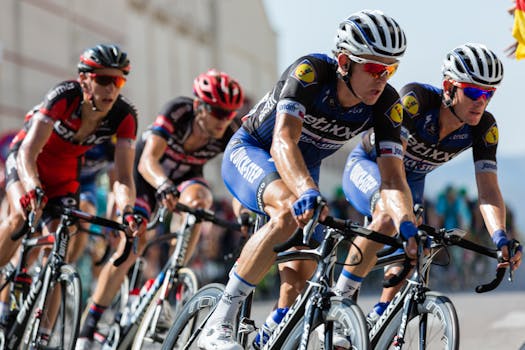Track Cycling: Pedaling Techniques, Training, and Strategies to Compete on the Velodrome
Track cycling is a thrilling and highly competitive sport that takes place on a specially designed oval track known as a velodrome. Athletes race against each other in various events, showcasing their speed, endurance, and tactical prowess. To excel in track cycling, riders must master specific pedaling techniques, engage in rigorous training, and develop effective strategies for competition. This article delves into these essential components, providing insights for aspiring track cyclists.
Understanding Pedaling Techniques
Pedaling technique is crucial in track cycling, as it directly impacts speed and efficiency. Here are some key techniques that cyclists should focus on:
- Circle Pedaling: This technique involves applying force throughout the entire pedal stroke, not just during the downstroke. Cyclists should aim to pull up on the pedals during the upstroke, creating a circular motion that maximizes power output.
- Cadence Control: Maintaining an optimal cadence (the number of pedal revolutions per minute) is vital. Elite track cyclists often pedal at cadences between 90 to 120 RPM, depending on the event. Training to find and maintain this rhythm can enhance performance.
- Power Application: Cyclists should focus on generating maximum power during the downstroke. This can be achieved through strength training and specific drills that target the muscles used in cycling.
For example, Olympic gold medalist Jason Kenny emphasizes the importance of a smooth pedal stroke, stating that “the key is to be efficient and maintain a consistent rhythm.”
Training Regimens for Track Cyclists
Training for track cycling involves a combination of endurance, strength, and speed work. Here are some essential components of a well-rounded training regimen:
- Endurance Training: Long rides at a moderate pace help build aerobic capacity. Cyclists should aim for at least one long ride per week, gradually increasing distance.
- Interval Training: High-intensity interval training (HIIT) is crucial for developing speed and power. Cyclists can incorporate short bursts of maximum effort followed by recovery periods to simulate race conditions.
- Strength Training: Incorporating weightlifting and resistance exercises can enhance muscle strength, particularly in the legs. Squats, deadlifts, and leg presses are effective exercises for cyclists.
- Skill Drills: Practicing starts, sprints, and cornering techniques on the velodrome can improve handling and bike control.
According to a study published in the Journal of Sports Sciences, cyclists who engaged in a structured training program that included these elements improved their performance by an average of 15% over a season.
Strategies for Competing on the Velodrome
Competing on the velodrome requires not only physical preparation but also strategic thinking. Here are some strategies that can give cyclists an edge during races:
- Positioning: Understanding how to position oneself in relation to other riders is crucial. Staying in the slipstream of competitors can conserve energy, allowing for a stronger finish.
- Pacing: Knowing when to push hard and when to conserve energy is vital. Cyclists should practice pacing strategies during training to find their optimal race rhythm.
- Race Tactics: Different events require different tactics. For example, in a sprint event, explosive power and quick acceleration are key, while endurance events may require a more measured approach.
- Psychological Preparation: Mental toughness can be as important as physical strength. Visualization techniques and positive self-talk can help athletes perform under pressure.
Case studies of successful track cyclists, such as Sir Chris Hoy, highlight the importance of strategy. Hoy often analyzed his competitors’ strengths and weaknesses to devise effective race plans, contributing to his multiple Olympic victories.
Conclusion
Track cycling is a complex sport that demands a combination of technical skill, physical conditioning, and strategic acumen. By mastering pedaling techniques, engaging in comprehensive training regimens, and employing effective race strategies, cyclists can enhance their performance on the velodrome. As the sport continues to evolve, staying informed about the latest training methods and competitive strategies will be essential for aspiring athletes. Whether you are a beginner or an experienced cyclist, the journey to success in track cycling is paved with dedication, practice, and a passion for the sport.
